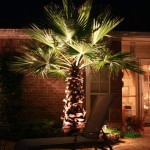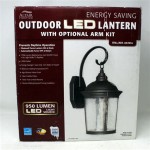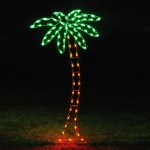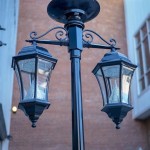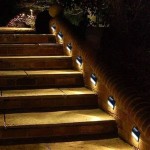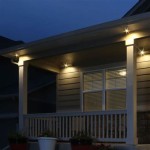Best Stain for Outdoor Cedar Table
Cedar is a popular choice for outdoor furniture due to its natural beauty, durability, and resistance to rot and insects. However, even cedar requires protection from the elements to maintain its appearance and extend its lifespan. Choosing the right stain is crucial for protecting your cedar table from sun damage, moisture, and mildew. This article explores the best types of stains for outdoor cedar tables, considering factors like UV protection, water resistance, and desired finish.
Understanding Cedar and Its Staining Needs
Cedar contains natural oils that repel insects and contribute to its weather resistance. These oils, however, can also make it challenging to achieve even stain penetration. Proper surface preparation is essential, including cleaning and potentially lightly sanding to ensure the stain adheres correctly. Understanding the specific needs of cedar will lead to a more successful staining project and a longer-lasting finish.
Types of Stains for Outdoor Cedar
Various stain types offer different levels of protection and aesthetic appeal. Choosing the right one depends on the desired look and the level of protection required.
Oil-Based Stains
Oil-based stains penetrate deeply into the wood, providing excellent protection against water damage and UV rays. They enhance the natural beauty of cedar by highlighting the wood grain. Oil-based stains require more time to dry and may require thinning for optimal application. They are also more challenging to clean up, typically requiring mineral spirits or paint thinner.
Semi-Transparent Stains
Semi-transparent stains offer a balance of protection and aesthetics. They allow some of the natural wood grain to show through while adding a hint of color. These stains offer good UV protection and water resistance, making them a suitable choice for outdoor furniture.
Solid Color Stains
Solid color stains completely cover the wood grain, providing a uniform color and maximum protection from the elements. They are ideal for older cedar tables that may have weathered or faded over time. Solid color stains typically require more frequent reapplication compared to oil-based or semi-transparent stains.
Water-Based Stains
Water-based stains are environmentally friendly and offer easy cleanup with soap and water. They dry quickly, allowing for faster project completion. However, water-based stains may not penetrate as deeply as oil-based stains and may require more frequent reapplication for optimal protection.
Key Considerations When Choosing a Stain
Several factors contribute to choosing the right stain for your outdoor cedar table. Carefully considering these aspects will ensure a successful and long-lasting finish.
UV Protection
Sunlight can cause cedar to fade and become brittle over time. Choosing a stain with UV protection is crucial for preserving the color and integrity of the wood. Look for stains specifically formulated for outdoor use and labeled with UV protection.
Water Resistance
Exposure to rain and moisture can lead to warping, rotting, and mildew growth. A water-resistant stain is essential to protect your cedar table from these damaging effects. Oil-based and semi-transparent stains generally offer good water resistance.
Desired Finish
Consider the desired aesthetic for your cedar table. Do you want to enhance the natural wood grain or create a uniform color? Oil-based stains and semi-transparent stains enhance the natural beauty of cedar, while solid color stains provide a more opaque finish.
Application and Maintenance
Different stains have varying application requirements. Some may require thinning or multiple coats for optimal coverage. Consider the ease of application and the required maintenance when choosing a stain. Water-based stains are generally easier to apply and clean up, while oil-based stains may require more effort.
Environmental Impact
If environmental friendliness is a concern, consider using a water-based stain. These stains contain fewer volatile organic compounds (VOCs) and are generally considered less harmful to the environment compared to oil-based stains.
Longevity and Durability
The longevity of a stain depends on several factors, including the type of stain, the quality of the product, and the exposure to the elements. Higher quality stains typically offer longer-lasting protection and require less frequent reapplication.
Preparation Before Staining
Proper surface preparation is crucial for achieving a professional-looking and long-lasting finish. Before applying any stain, clean the cedar table thoroughly with a wood cleaner or a mixture of mild detergent and water. Remove any mildew or dirt buildup. If the surface is rough or uneven, lightly sand with fine-grit sandpaper to create a smooth surface for better stain penetration.

10 Favorite Wood Stain Colors Angela Marie Made

Cedar Picnic Table Furniture Refinishing Roots Wings Llc

Bryan S Site The Finished Diy Cedar Patio Table

The Best Type Of Exterior Wood Stain For Your Ottawa Deck Bonds Decor

Image Result For Minwax Stain Chart On Red Cedar Wood Fireplace Mantel Staining Cornice

Image Result For Twp Stain On Western Red Cedar Color Chart Staining Deck Wood Colors

How To Treat Wood For Outdoor Use 3 Methods Explained

Exterior Wood Finishes Stain Sikkens Cetol

Cedar Outdoor Dining Table With Planter Insert Building Plans Garden Therapy

How To Treat Finish Maintain Western Red Cedar Wood

